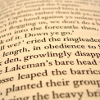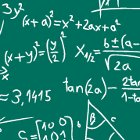Howard Gardner's Multiple Intelligences
Related to the theory of the three learning styles is Howard Gardner's multiple intelligence theory. Gardner pointed out that schools usually focus mainly on verbal-linguistic and logical-mathematical skills but that these fall into just two of eight categories of intelligence. Some students who are weak in these traditional areas may actually be highly intelligent in other areas.
Verbal-Linguistic |

|
People with high verbal-linguistic intelligence do well with words and therefore learn best through the traditional methods of reading and writing as well as listening and speaking. |
Logical-Mathematical |

|
People with high logical-mathematical intelligence do well with numbers and abstract reasoning and therefore learn best through problem-solving (IQ tests primarily measure this type of intelligence). |
Visual-Spatial |

|
People with high visual-spatial intelligence do well with pictures, diagrams, and study charts and therefore learn best through seeing the information visually and then visualizing it again later in their mind. |
Bodily-Kinesthetic |

|
People with high bodily-kinesthetic intelligence do well with physical activities and therefore learn best through hands-on experiences and by moving their body. |
Musical-Rhythmic |

|
People with high musical-rhythmic intelligence do well with rhythms and tones and therefore learn best through song or other auditory formats. |
Interpersonal |

|
People with high interpersonal intelligence do well with social experiences and therefore learn best through interacting and discussing information with others. |
Intrapersonal |

|
People with high intrapersonal intelligence do well with self-reflection and therefore learn best by using their own intuition. |
Natural |

|
People with high natural intelligence do well with the natural world and therefore learn best
when they can learn outdoors in the "real world".
(This eighth intelligence was later added to the original seven) |



